
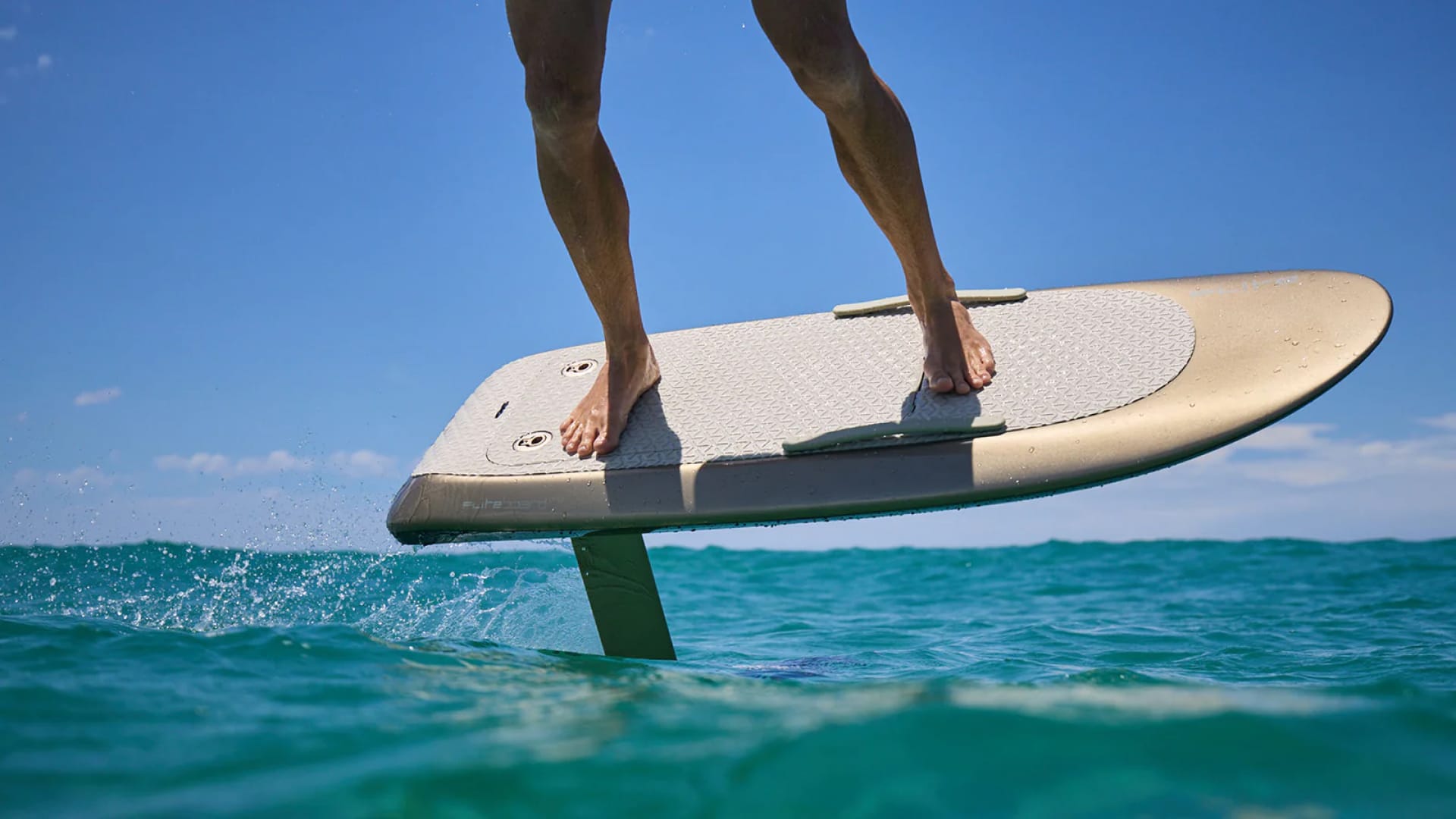
When comparing the Fliteboard Pro to the Ultra L2, it’s important to consider key factors like volume, rider level, and the eFoil propulsion systems. Both boards are designed for different rider profiles, offering unique benefits depending on your skill level and riding style.
Start with the end in mind but consider your level and willingness to work to achieve that end. Both boards are excellent options for intermediate to advanced eFoilers. The Fliteboard PRO is accessible to most riders immediately with a lesson and a few hours of practice. The Ultra L2 would take a lot more time for a new rider, and it could be a big ask for someone to learn on such a small board. There are benefits to using such a small board. If you wish to get into eFoil surfing or the most technical riding and racing, the ultra L2 is the final destination, not the starting point. If you’re comparing options and ready to take the next step, browse our full collection of efoils for sale to find the right match for your riding style.
If you’re already foiling on a small board in another sport, like prone foil, wake foil, or wingfoil, you could be an excellent candidate to get the ultra L2. Everyone else should consider a Fliteboard PRO. It will be a manageable challenge, adequate for a long time regarding progress, and you will progress faster with a more forgiving advanced board. Conversely, once you have a season or two under your belt, you might want to upgrade to the smallest, most balanced, and responsive eFoil. This article will break down the differences so you can make an educated choice. Please call us if you want to talk about the best option for where you are too.
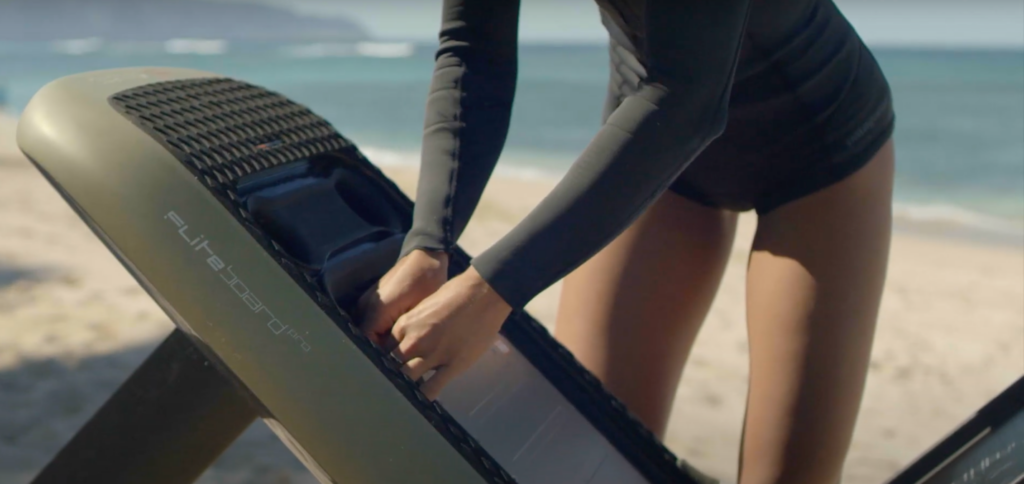
Fliteboard Pro vs Ultra L2: Board Dimensions and Volume
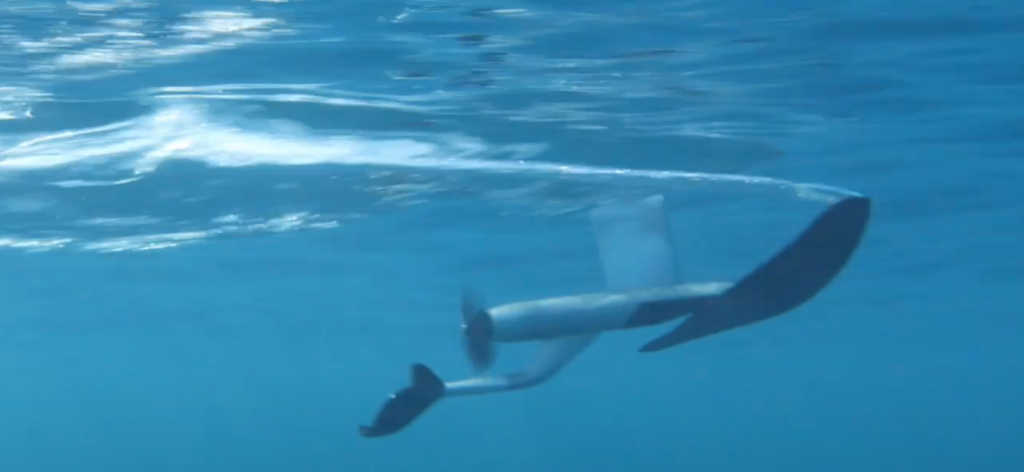
Efoil Propulsion Systems
Both the Fliteboard Pro and Ultra L2 come with the option to select from a range of propulsion systems. For most riders, the Fliteboard Performance eFoil system is an excellent option, offering versatile power and precision:
However, if you are an advanced rider looking for the apex of foil design, you should consider the Mark Newson (MN) Carbon eFoil System:
Not ready to commit to a full battery setup? Our Fliteboard battery rental Rosemary Beach service makes it easy to test different propulsion systems while you’re riding locally or on vacation.
Wing Options
For riders looking to elevate their experience with wings, both boards are compatible with Fliteboard’s premium wing range:
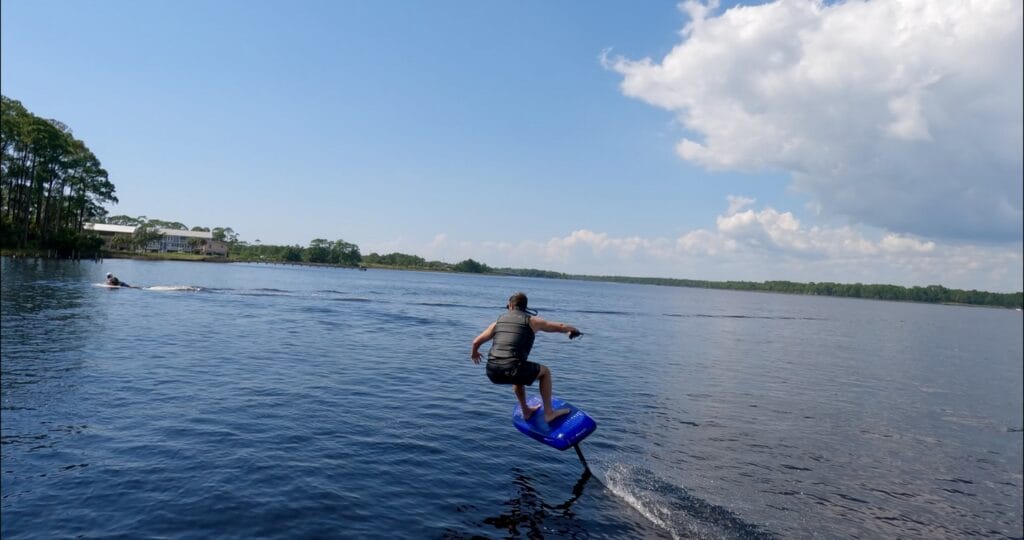
Considerations for Upgrading
For riders starting with the Fliteboard Pro, it’s a good idea to invest in an eFoil system and wings that allow for future upgrades. If you want to transition to a more advanced board like the Ultra L2, you’ll already have the necessary components. Fliteboard’s modular design makes upgrading parts like wings or propulsion units easy as your skills progress.
As we mentioned, start with the end in mind. Consider a larger wave wing and perhaps a folding prop if you see yourself getting into waves. If racing is on your mind, you might consider a race wing, depending on your level.
Fliteboard has a massive range of wings to choose from. We have a wing rental program and several guides on testing and choosing Fliteboard wings. Our Fliteboard wing rental Santa Rosa service lets you try them all in real-world conditions before you commit You can find all that information linked here.
Whether you’re a beginner seeking progression or an advanced rider ready to tackle the most aggressive conditions, both the Fliteboard Pro and Ultra L2 have a lot to offer.
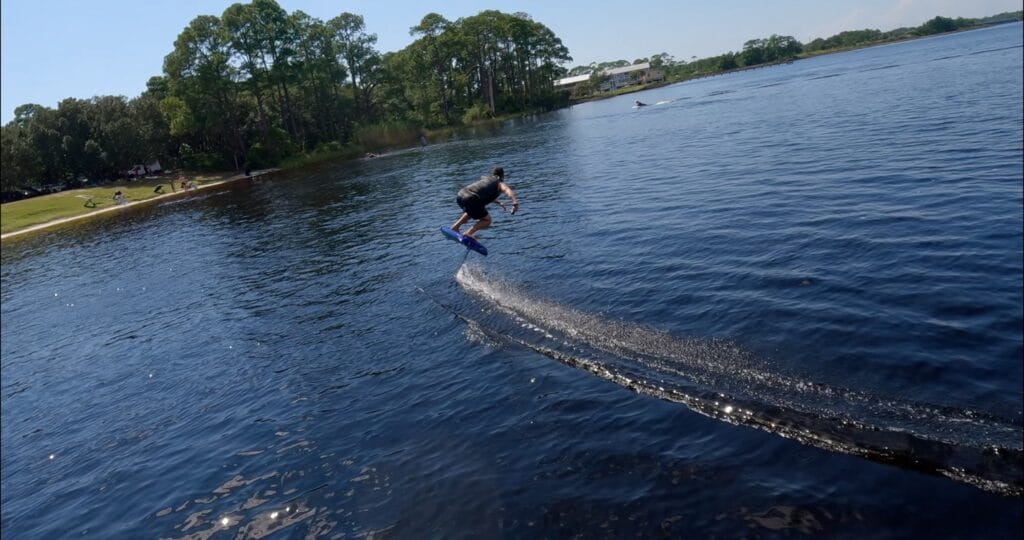
Impact of Board Volume on Stability
Board volume also plays a critical role in stability. Higher-volume boards like the Fliteboard Pro (67 liters) offer more buoyancy and size and, therefore, more inherent stability. The pro is responsive but not as responsive as the Ultra L2. This makes them easier for intermediate riders to handle. On the other hand, lower-volume boards like the Ultra L2 (49 liters) require more skill to manage but, when paired with larger high-aspect wings, can provide a stable yet more responsive experience for advanced riders. Regardless, whatever energy you put into this board, it will translate directly into the foil. Meaning there is little room for error when learning.
Lateral Stability and Wing Considerations for eFoiling
When selecting your board and wing combination for eFoiling, lateral stability is a key consideration, especially for riders using high-aspect wings designed for longer glides and efficiency.
You can improve the stability with a longer wingspan at first. For those using high-aspect wings like the Flow 1300, the larger wingspan will increase lateral stability over something like the Flow 1100, which is particularly beneficial on smaller, more performance-oriented boards like the Ultra L2. This makes them an excellent choice for riders looking to enjoy longer glides, smoother rides, and better balance on small waves or wake. As you progress, consider smaller wings for more speed and sharper turns. Something like the Race 900 would be exciting.
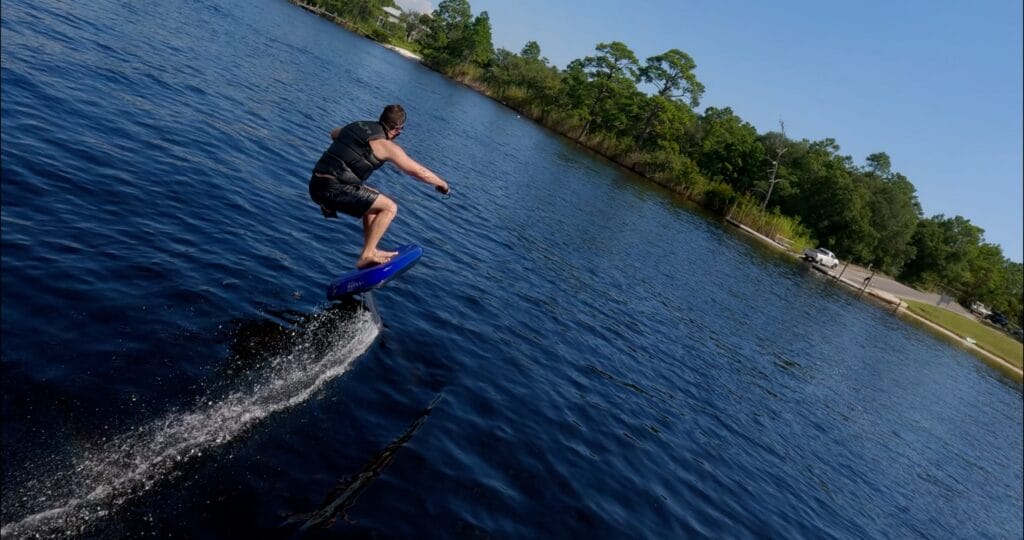
Response and Precision of the Ultra L2
The Ultra L2 board stands apart for its unmatched responsiveness, offering precision handling similar to a prone surf foil board. One of the standout design features of the Ultra L2 is the placement of the battery, located directly above the foil mast. This contributes to an exquisitely balanced feel, drastically improving how the rider’s inputs directly translate into foil movements.
With every subtle shift in weight—from your toes to heel or even slight adjustments in your body positioning—the Ultra L2 reacts instantly. This immediate response can be exhilarating for advanced riders who have the skill to manage these nuanced inputs.
The connection between rider and board feels incredibly natural. It is almost as if the board is an extension of the rider’s body, offering an intuitive level of control.
For riders already comfortable with foiling, this precise control unlocks a whole new realm of performance. Whether you’re carving, pumping, or making fine adjustments mid-ride, the Ultra L2 delivers immediate feedback. This makes it a favorite for experienced eFoilers and prone foil surfers who demand the highest level of responsiveness from their gear.
However, the Ultra L2’s ultra-responsive design isn’t ideal for beginners or less experienced riders. The aggressive feedback can be overwhelming, causing overcorrections or unexpected movements that make it more difficult to stay balanced and enjoy the ride. For newer riders, the Fliteboard Pro, which offers a smoother, more forgiving response, might be a better choice for gaining confidence and control before progressing to a highly responsive board like the Ultra L2.
Key Features That Affect Responsiveness
In summary, the Ultra L2’s ultra-responsive nature makes it a top pick for experienced eFoilers. Still, its aggressive performance and direct feedback are best suited for those who can fully harness its capabilities.
If you are undecided, call us to talk it out. We’re an eFoil school and retail center based on Florida’s Emerald Coast. We live and breathe Fliteboard and eFoils.
If you have questions about Fliteboards or need help deciding which is best for you, call (850) 400-8500 or email us at [email protected] for a custom recommendation. We offer eFoil lessons, guided eFoil tours, eFoil demos, Flitecell battery rental, wing rental, storage and delivery options for your eFoils, and more.
Please fill out this form and someone from our team will contact you as soon as possible. You can also reach us by email at [email protected]